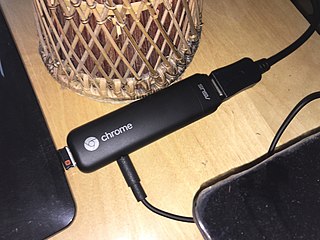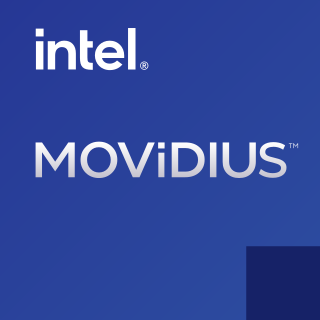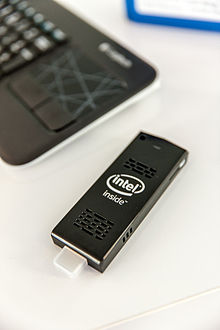
A netbook is a small and inexpensive laptop designed primarily as a means of accessing the Internet. Netbooks were sold from 2007 until around 2013, when the widespread advent of smartphones and tablets eclipsed their popularity.

A tablet computer, commonly shortened to tablet, is a mobile device, typically with a mobile operating system and touchscreen display processing circuitry, and a rechargeable battery in a single, thin and flat package. Tablets, being computers, have similar capabilities, but lack some input/output (I/O) abilities that others have. Modern tablets largely resemble modern smartphones, the only differences being that tablets are relatively larger than smartphones, with screens 7 inches (18 cm) or larger, measured diagonally, and may not support access to a cellular network. Unlike laptops, tablets usually run mobile operating systems, alongside smartphones.

Asus Eee is a family of products by AsusTek Computer Inc. The product family began with the release of the Eee PC subnotebook in 2007; since then, the product family has diversified into a number of PC form factors. According to the company, the name Eee derives from "the three Es," an abbreviation of its advertising slogan for the device: "Easy to learn, Easy to work, Easy to play".

A mini PC is a small-sized, inexpensive, low-power, legacy-free desktop computer designed for basic tasks such as web browsing, accessing web-based applications, document processing, and audio/video playback.
Rockchip is a Chinese fabless semiconductor company based in Fuzhou, Fujian province. Rockchip has been providing SoC products for tablets & PCs, streaming media TV boxes, AI audio & vision, IoT hardware since founded in 2001. It has offices in Shanghai, Beijing, Shenzhen, Hangzhou and Hong Kong. It designs system on a chip (SoC) products, using the ARM architecture licensed from ARM Holdings for the majority of its projects.
The history of tablet computers and the associated special operating software is an example of pen computing technology, and thus the development of tablets has deep historical roots. The first patent for a system that recognized handwritten characters by analyzing the handwriting motion was granted in 1914. The first publicly demonstrated system using a tablet and handwriting recognition instead of a keyboard for working with a modern digital computer dates to 1956.
Chromebook is a line of laptops, desktops, tablets and all-in-one computers that run ChromeOS, a proprietary operating system developed by Google.
Atom is a system on a chip (SoC) platform designed for smartphones and tablet computers, launched by Intel in 2012. It is a continuation of the partnership announced by Intel and Google on September 13, 2011 to provide support for the Android operating system on Intel x86 processors. This range competes with existing SoCs developed for the smartphone and tablet market from companies such as Texas Instruments, Nvidia, Qualcomm and Samsung. Unlike these companies, which use ARM-based CPUs designed from the beginning to consume very low power, Intel has adapted the x86-based Intel Atom line of CPU developed for low power usage in netbooks, to even lower power usage.

The post-PC era was a market trend observed during the late 2000s and early 2010s involving a decline in the sales of personal computers (PCs) in favor of post-PC devices; which include mobile devices such as smartphones and tablet computers as well as other mobile computers such as wearable and ubiquitous ones. These devices emphasize portability and connectivity, including the use of cloud-based services, more focused "apps" to perform tasks, and the ability to synchronize information between multiple devices seamlessly.
The MK802 is a PC-on-a-stick produced by Rikomagic, a Chinese company using mostly two series of systems on a chip architectures:
Miracast is a wireless communications standard created by the Wi-Fi Alliance which is designed to transmit video and sound from devices to display receivers. It uses Wi-Fi Direct to create an ad hoc encrypted wireless connection and can roughly be described as "HDMI over Wi-Fi", replacing cables in favor of wireless. Miracast is utilised in many devices and is used or branded under various names by different manufacturers, including Smart View, SmartShare, screen mirroring, Cast and Connect, wireless display and screen casting.

Allwinner Technology Co., Ltd is a Chinese fabless semiconductor company specialized in mixed-signal systems on a chips (SoC). The company is headquartered in Zhuhai, Guangdong, China.

Amlogic Inc. is a fabless semiconductor company that was founded on March 14, 1995, in Santa Clara, California and is predominantly focused on designing and selling system on a chip integrated circuits. Like most fabless companies in the industry, the company outsources the actual manufacturing of its chips to third-party independent chip manufacturers such as TSMC. Its main target applications as of 2021 are entertainment devices such as Android TV-based devices and IPTV/OTT set-top boxes, media dongles, smart TVs and tablets. It has offices in Shanghai, Shenzhen, Beijing, Xi'an, Chengdu, Hefei, Nanjing, Qingdao, Taipei, Hong Kong, Seoul, Mumbai, London, Munich, Indianapolis, Milan, Novi Sad and Santa Clara, California.

The Rockchip RK3288 is an ARM architecture System on Chip (SoC) from Rockchip. It is the first SoC, in August 2014, that uses the 32-bit ARM Cortex-A17 processor. It is a quad-core processor with a NEON coprocessor and hardware acceleration for video and 3D graphics. It is used in a number of Chromebooks and other low-power, low-performance devices.

The Chromebit is a stick PC running Google's ChromeOS. It is able to be plugged into any display via HDMI to act as a personal computer. Keyboards and mice are able to be connected over Bluetooth or Wi-Fi. The device was announced in April 2015 and began shipping November 2015.

The Intel Compute Stick was a stick PC designed by Intel to be used in media center applications. According to Intel, it is designed to be smaller than conventional desktop or other small-form-factor PCs, while offering comparable performance. Its main connector, an HDMI 1.4 port, along with a compatible monitor and Bluetooth-based keyboards and mice, allows it to be used for general computing tasks.

Movidius is a company based in San Mateo, California, that designs low-power processor chips for computer vision. The company was acquired by Intel in September 2016.
A vision processing unit (VPU) is an emerging class of microprocessor; it is a specific type of AI accelerator, designed to accelerate machine vision tasks.
Pine Store Limited, doing business as Pine64, is a Hong Kong–based organization that designs, manufactures, and sells single-board computers, notebook computers, as well as smartwatch/smartphones. Its name was inspired by the mathematical constants pi and e with a reference to 64-bit computing power.












